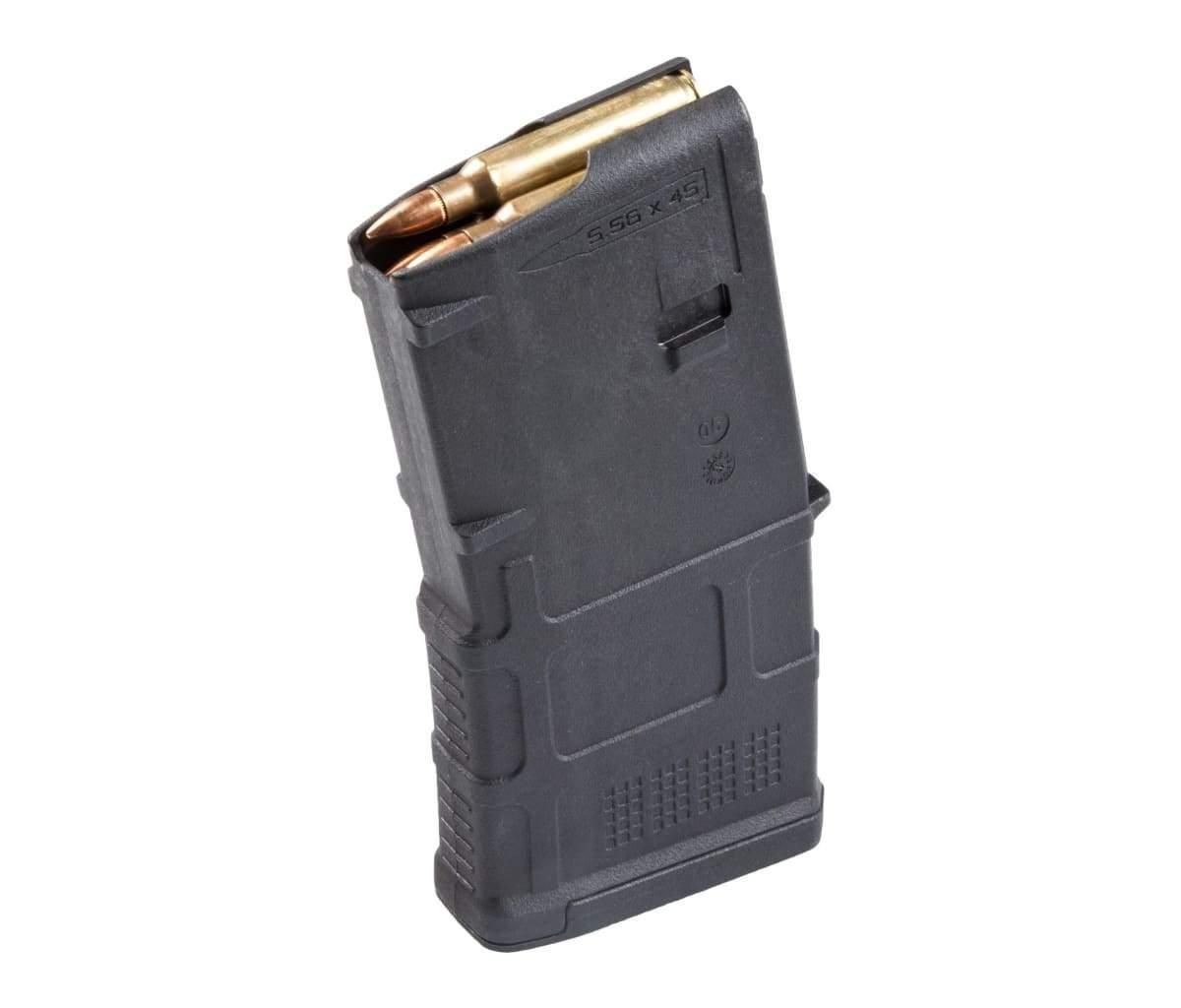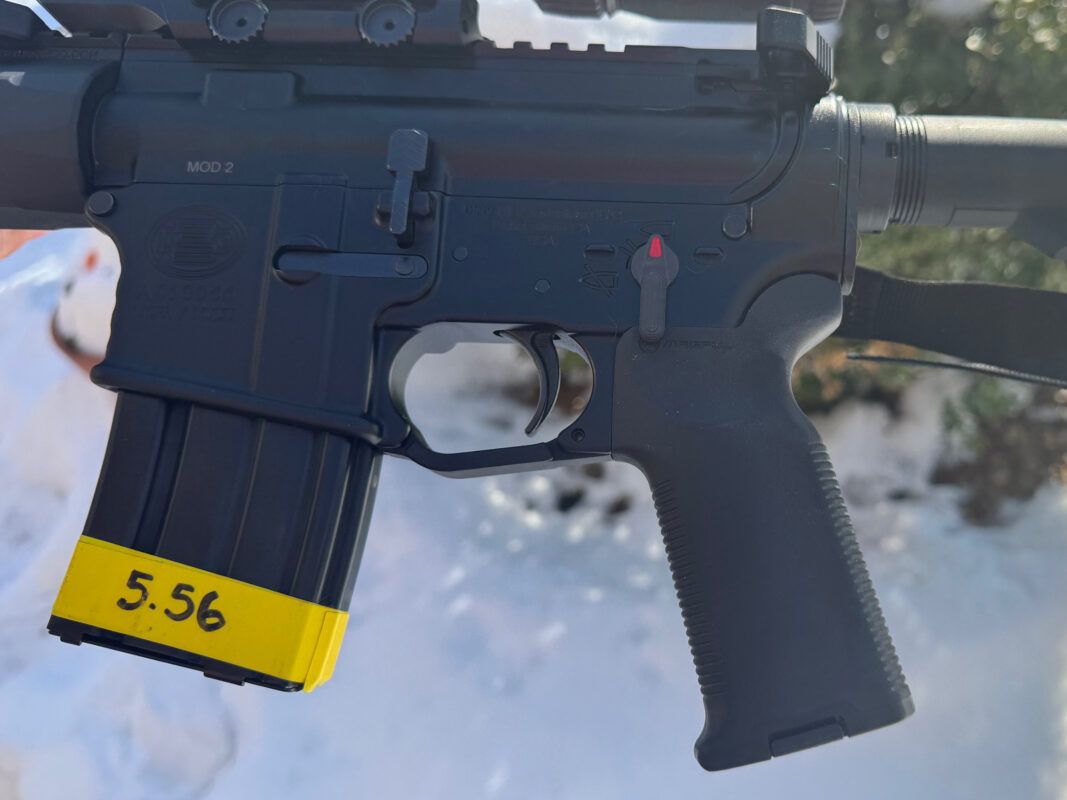AR Rifle, AR-15 Accessories
20-Round vs. 30-Round AR-15 Magazines: A Detailed Comparison for 2025
Whenever I go to the range lately, my go-to choice for AR mags remains the 20-rounder…for a lot of reasons. If you’re a fan of 30-rounders or have never experienced shooting your AR with a quality 20-round magazine, then read on, and consider picking up a few for your next range trip. We promise, you’ll thank us.
The AR-15 remains a cornerstone of American firearms culture in 2025, valued for its adaptability across recreational, competitive, and defensive roles. Among its many customizable elements, the magazine stands out as a defining factor in performance and usability. For AR-15 owners browsing AR15Discounts.com, the choice between 20-round and 30-round magazines represents a pivotal decision, balancing capacity, practicality, and specific use cases. This guide delves into the distinctions between these two popular options, offering insights into their design, applications, and advantages to help shooters select the right fit for their needs.
The Basics of AR-15 Magazine Capacity
Magazines serve as the critical link between ammunition and firearm, storing rounds and feeding them into the chamber with each trigger pull. Capacity directly influences how many shots can be fired before reloading, making it a primary consideration for AR-15 users. The 30-round magazine has long been the standard, rooted in its military origins with the M16, while the 20-round variant offers a compact alternative with historical precedence and modern relevance. Both options are widely available at AR15Discounts.com, crafted by trusted manufacturers like Magpul, DuraMag, and Lancer, but their differences warrant closer examination.

Historical Context and Design Evolution
The AR-15’s magazine history traces back to its early development in the late 1950s. Initial prototypes featured straight-bodied, 25-round aluminum magazines, but testing revealed reliability issues when fully loaded, prompting a shift to 20-round designs for production models. These early magazines, used in trials at Fort Benning, prioritized manageable weight and feeding consistency over maximum capacity. By the 1960s, as the AR-15 evolved into the M16, the military adopted the now-iconic 30-round curved magazine, patented by Colt in 1966. This design accommodated a larger round stack, leveraging a “dogleg” curve to align with the natural geometry of tapered 5.56 NATO cartridges.
The 20-round magazine’s straight body limits its capacity but simplifies follower and spring dynamics, while the 30-round magazine’s curve enhances stack support, albeit with slight inconsistencies mid-stack. Modern manufacturing has refined both, with polymer and metal options improving durability and feeding reliability. Understanding this evolution highlights why both capacities remain viable choices at AR15Discounts.com, each serving distinct purposes.

Physical Characteristics and Handling
The most immediate difference between 20-round and 30-round magazines lies in their size and weight. A 20-round magazine, whether aluminum or polymer, sits closer to flush with the magazine well, reducing protrusion by several inches compared to its 30-round counterpart. This compactness translates to a lighter load—empty, a typical 20-round polymer magazine weighs approximately 3.5 ounces, while a 30-round version tips the scales at around 4.5 ounces. When loaded with 5.56 NATO rounds (averaging 0.4 ounces each), the difference grows: 11.5 ounces for a full 20-round magazine versus 16.5 ounces for a 30-round one.
Handling reflects these disparities. The shorter 20-round magazine offers a lower profile, easing manipulation in tight spaces or when stowing in pockets or slim bags. Conversely, the 30-round magazine’s extended length provides a larger gripping surface, potentially aiding reloads under stress, though it protrudes noticeably from the rifle. Shooters must weigh these physical traits against their intended applications, a decision AR15Discounts.com facilitates with a diverse inventory.
Speaking personally, When I load up a 20-round magazine at the range, it feels like I’m setting myself up for something deliberate, like every shot has a purpose. It’s not just about blasting through ammo—it’s about focus, control, and making each trigger pull count. With a 30-rounder, I sometimes catch myself slipping into that mag-dump mindset, unloading rounds just because they’re there, almost like the extra capacity dares me to burn through it. But with the 20, I’m more mindful; it’s a smaller stack, so I pace myself, zero in on my target, and work on precision instead of volume. It’s a subtle shift, but it makes my range time feel more intentional, like I’m training with purpose rather than chasing the rush of a full dump.

Applications and Practical Advantages
20-Round Magazines: Precision and Portability
The 20-round magazine excels in scenarios where compactness and stability take precedence. For shooters zeroing their rifles prone—whether off a bipod or a sandbag—the shorter length avoids interference with the ground or support, maintaining consistent elevation. This makes it a preferred choice for precision tasks, such as sighting in with heavier 77-grain ammunition, a load often favored for its ballistic performance at distance. The reduced capacity also aids in load separation, allowing users to designate 20-round magazines for specific ammunition types (e.g., 77-grain for zeroing, 55-grain for close-range drills), streamlining range organization.
Portability is another strength. When paired with a folding-stock AR-15 stored in a backpack, a 20-round magazine minimizes bulk, enabling smoother withdrawal from low-profile bags compared to the longer 30-round design. This advantage extends to hunting applications, such as pairing with a lightweight Ruger American 5.56 bolt-action rifle for coyote control on a farm. The 20-round magazine’s manageable size enhances mobility on an ATV or in rugged terrain, where every ounce counts. Additionally, in states with capacity restrictions, limiting a 20-round magazine to 5 or 10 rounds with a blocker is simpler than modifying a 30-round unit, ensuring compliance without sacrificing utility.
Law enforcement personnel also find value in the 20-round magazine’s discretion. For officers required to carry spare magazines on a belt, the shorter profile blends more seamlessly into a uniform compared to the prominent 30-round magazine, a consideration in agencies with policies against visible high-capacity designs. Its ease of stowing in pockets or duty gear further bolsters its appeal for tactical use where space is at a premium.
30-Round Magazines: Capacity and Versatility
The 30-round magazine, as the AR-15’s standard, shines in scenarios demanding sustained firepower. Its additional 10 rounds reduce reload frequency, a critical advantage in competitive shooting where multiple targets require rapid engagement. For recreational range sessions, this capacity extends time between pauses, maximizing enjoyment and practice efficiency. In defensive contexts, the extra rounds provide a buffer, offering peace of mind when every shot counts—a feature that has cemented its popularity among AR-15 owners.
Compatibility with accessories enhances its versatility. The 30-round magazine fits seamlessly into a wide array of pouches, chest rigs, and carriers designed around its dimensions, a standardization stemming from its military heritage. This makes it a natural fit for tactical training, where quick access to reloads is essential. Its larger size also accommodates features like transparent windows (e.g., Magpul PMAG Windowed variants), allowing shooters to monitor ammunition levels—a practical benefit in dynamic situations.
AR-15 Magazine Reliability and Performance Considerations
Both 20-round and 30-round AR-15 magazines, when sourced from reputable manufacturers, deliver reliable feeding across a range of ammunition weights, from 55-grain to 85-grain projectiles. The 20-round AR-15 magazine’s straight design relies on an articulating follower and spring to support the stack, maintaining consistent presentation to the bolt. The 30-round magazine’s curved geometry better accommodates the natural arc of stacked rounds, though slight follower articulation is still required, potentially leading to minor inconsistencies mid-stack (e.g., rounds 14–24) in dirty conditions. Modern enhancements, such as anti-tilt followers in Magpul PMAGs or stainless-steel springs in DuraMag models, mitigate these concerns, ensuring both options perform admirably.
Testing remains advisable to confirm compatibility with specific rifles. Loading one or two rounds and verifying bolt lock-back offers a quick reliability check, while firing a full AR-15 magazine (20 or 30 rounds) twice provides greater assurance—sufficient for most shooters, especially amid ammunition cost concerns in 2025. Magazines are wear items, susceptible to cracking, feed lip spreading, or physical damage from drops. Their affordability at AR15Discounts.com encourages replacement over repair when issues arise.
AR-15 Magazine Legal and Practical Factors
Capacity restrictions vary by jurisdiction, influencing the choice between 20-round and 30-round magazines. States like California may limit detachable magazines to 10 rounds, rendering both options viable only with blockers, though the 20-round magazine’s smaller baseline simplifies compliance. Elsewhere, unrestricted areas allow full use of 30-round capacity, aligning with its standard role. Shooters must consult local regulations before purchasing from AR15Discounts.com to ensure legality.
Practically, the decision hinges on use case. The 20-round magazine’s compactness suits precision, portability, and discretion, while the 30-round magazine’s capacity caters to volume and versatility. Storage preferences—belt, bag, or rig—also play a role, as does the shooter’s reloading style. Proactive reloaders who strip magazines before inserting spares may prioritize reliability over drop-free consistency, a trait varying by lower receiver tolerances.
Conclusion: Choosing Between 20 and 30 Rounds
The debate between the 20-round and 30-round AR-15 magazine lacks a universal answer—each offers distinct benefits tailored to specific needs. The 20-round magazine appeals to shooters valuing a low profile, whether for prone accuracy, concealed carry, or regulatory compliance. There’s also the fact that it makes me feel like I am saving ammo.
The 30-round AR-15 magazine, with its higher capacity and accessory compatibility, suits those prioritizing firepower and flexibility across competitive or defensive scenarios. AR15Discounts.com stocks both in premium forms—Magpul PMAGs, DuraMag stainless steel, and more—empowering customers to test and integrate either into their arsenal. By weighing intended use, handling preferences, and local laws, AR-15 owners can confidently select the AR-15 magazine that enhances their rifle’s performance in 2025.

